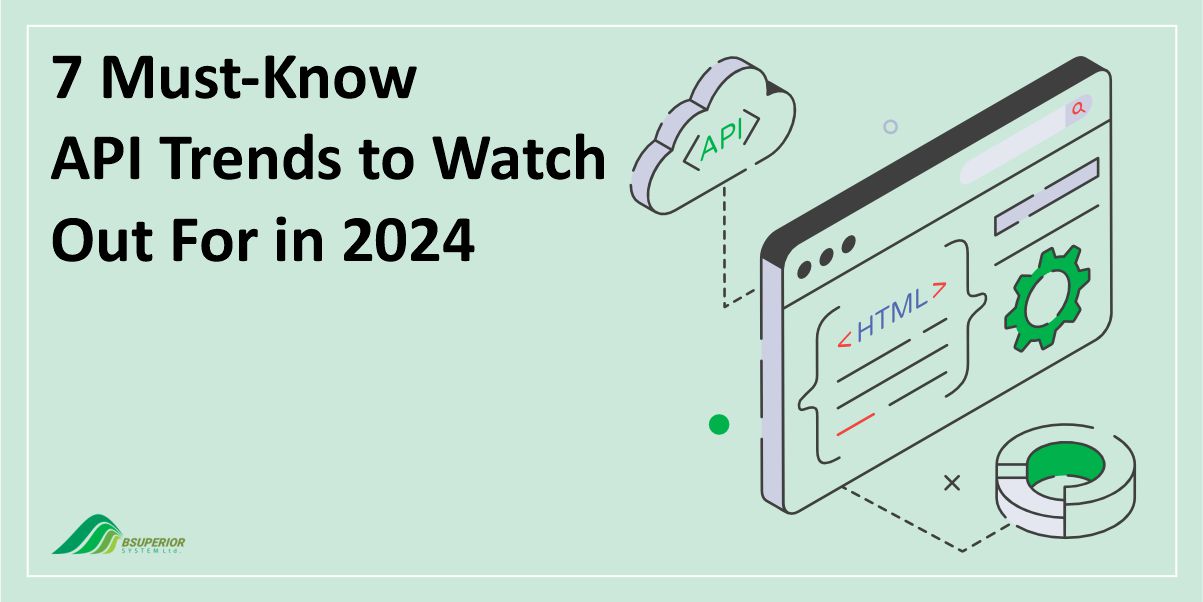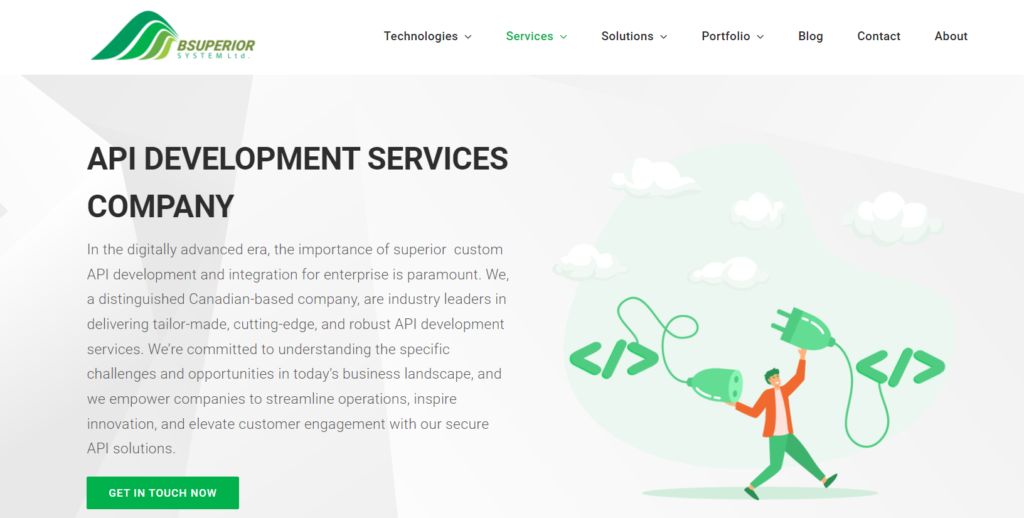7 Must-Know API Trends to Watch Out For in 2024

Table Of Content
The digital world is constantly evolving, and APIs are playing an increasingly central role. These digital messengers function as vital bridges between different systems and allow software applications to communicate and share data.
Beyond simply reflecting the current landscape, API management trends shape the future of development and management strategies. In the following blog post, we’ll tap into the top 7 must-know trends in API management for 2024.
By staying informed of and implementing these crucial strategies, you can ensure your business not only adapts but also flourishes in the dynamic digital ecosystem.
Understanding API and API Management
Before exploring the top API trends to watch out for in 2024, it is a good idea to start with a discussion of the basics: API and API management.
What are APIs?
API stands for Application Programming Interface. To put it in simple words, APIs are messengers between different software programs.
These messengers follow specific rules to allow programs to request and share data or functionalities. This way, developers can build new applications faster by borrowing features from others.
Read More: ERP vs. MRP: What Are the Differences and Which One Do You Need?
What is API Management?
API management serves as the control center for all your APIs. It’s about creating, publishing, and governing them effectively. This includes:
- Setting Policies: Who can access what data? How much data can they use?
- Keeping Track: Monitoring usage and analyzing performance.
- Building Communities: Helping developers understand and use your APIs.
- Security: Protecting your data and systems from unauthorized access.
There are two key tools in this process. These are API Gateway, which directs traffic and enforces security, and the Developer Portal, which provides resources for app builders.
7 Top API Trends in 2024
Now, with this foundation in place, we can explore the exciting world of API trends and see how they’re shaping the future of software development.
1. Mainstream Adoption of API
APIs are breaking free from their developer-only past and becoming mainstream tools for businesses everywhere. 2024 is the year this democratization explodes, putting the power of APIs in the hands of everyone.
Several driving forces are pushing this trend forward, including:
- Democratization by Design: Low-code/no-code platforms and automation tools are making API creation, management, and use accessible to everyone, not just tech wizards. This puts the magic of APIs for automation and integration into anyone’s hands.
- The Rise of API Marketplaces: Acting as somehow an app store for APIs, these marketplaces offer businesses a one-stop shop to discover, purchase, and integrate APIs seamlessly, even without deep technical knowledge.
- Documentation Done Right: API creators are realizing that clear and comprehensive documentation is key to adoption. This allows non-technical businesses to take advantage of APIs for various tasks, from building integrations to streamlining workflows.
2. API Security is on High Alert
Despite their power, APIs can be vulnerable to various attacks, with unauthorized access being a major concern. Hackers exploit weaknesses like broken authorization and flawed authentication to compromise systems and steal data.
Other risks include unrestricted resource usage leading to denial-of-service attacks, and misconfiguration due to complex API setups.
The growing reliance on APIs necessitates robust security measures. Here are some key trends and techniques emerging in this field in 2024:
- Zero-Trust: The Zero-Trust approach ditches automatic trust for verification of every access request, regardless of origin. This continuous validation makes it highly effective for securing APIs.
- Service Mesh: By adding service meshes, you gain dedicated security layers for your microservices. These layers oversee and protect communication between services, including APIs, leading to a more robust security posture.
- Standardized Authentication: OAuth 2.0 and OpenID Connect provide secure access control for APIs. Widely adopted for their robust security, these protocols act as gatekeepers for APIs.
By verifying users’ identities and permissions, they make sure that only authorized individuals can access data and functionality - Automated Testing: The adoption of automated testing tools for continuous API security assessment is increasing. These tools use vulnerability scanning and runtime testing methodologies to proactively identify and remediate security vulnerabilities within APIs.
- Serverless Security: As serverless architectures become more popular, securing their APIs requires specific practices such as granting minimum permissions, safeguarding connected resources, and tracking how functions operate.
Read More: ERP vs. CRM: Which is the Right One For You?
3. Embracing Cloud-Based API Management
Traditional API management, stuck in its on-premises ways, requires businesses to juggle hardware, software, and maintenance just to manage their APIs.
But with businesses evolving and cloud computing soaring, these solutions struggle to keep up with demands for scalability, cost-efficiency, and seamless integration.
By using the flexibility, pay-per-use model, and cross-platform capabilities of the cloud, cloud-based API Management solutions offer a more agile, efficient, and reliable way to manage your APIs.
These solutions are an all-in-one hub with API gateways, security features, monitoring, and analytics, unifying your API management across hybrid and multi-cloud environments.
There are a few reasons that will help us understand why cloud-based solutions are leaving traditional ones in the dust:
- Always Available: Cloud providers offer elastic load balancing, auto-scaling, and disaster recovery, and make sure that your APIs are always up and running.
- Cost-Effective: Cloud-based solutions let you focus on innovation while they handle the management burden.
- Cross-Platform Compatibility: No matter which cloud platform you use, cloud-based API management can handle it, seamlessly integrating and managing your APIs across different vendors.
4. The Rise of AI-Powered APIs
AI continues its dominance as a major trend, and even APIs are feeling its impact. Exciting prospects like automated discovery, AI-driven design, and self-managing APIs promise to streamline development workflows.
However, this integration isn’t without its challenges. For these AI-powered possibilities to work effectively, they rely on data and functionality exposed by APIs, often gathered from a variety of sources with diverse formats. This raises concerns about managing and governing this complex process.
Experts point out that data dispersion and format variations across different systems can create obstacles. To ensure the reliability and effectiveness of self-governing APIs, thorough testing and continuous monitoring are essential.
Businesses will likely exploit their existing API management expertise to manage AI as another consumer of APIs.
It becomes crucial to govern how AI interacts within the organization, ensuring the data and functionality it accesses (likely through APIs) is secure, reliable, and exposed appropriately.
It will be fascinating to see how API tool providers respond to this convergence. Two potential directions emerge. While some may focus on integrating AI into their products for faster and more automated development, others might prioritize holistic management and governance solutions.
Read More: Benefits of ERP in Healthcare [To 6 Benefits]
5. Chatbots: Conversation Companions Powered by APIs
Chatbots, the computer programs mimicking human conversation, are on the rise. Used for tasks like customer support and beyond, these AI-powered tools offer a more natural way to interact with technology.
But what truly fuels their potential? APIs act as the behind-the-scenes intermediaries. By seamlessly integrating with various systems through APIs, chatbots provide a smooth user experience, allowing them to access and process information, answer questions, and fulfill various functionalities.
From customer service interactions to sales and marketing efforts, chatbots offer diverse applications. Imagine a customer service chatbot, powered by APIs, readily answering your product inquiries or guiding you through troubleshooting steps.
The possibilities are vast, making chatbots a valuable tool in today’s tech landscape.
6. Focusing on Developer Experience and Productivity
In today’s fast-paced world, keeping developers happy is key to success. This is especially true for platform engineering projects, where developer experience (DX) plays a crucial role.
DX-focused tools enable developers to code, test, and deploy faster, leading to shorter development cycles and stronger applications.
Bridging the gap between local and remote environments is crucial for developers. It allows them to work in a familiar local setting that mirrors the remote production environment.
This consistency ensures applications behave as expected throughout the development lifecycle. It also helps reduce bugs and deployment headaches.
These tools are game changers for productivity and streamlined workflows. By simplifying complex tasks and automating routine ones, they free up developers to focus on what they do best – writing code and creating value.
Tools such as CI/CD pipelines further accelerate the process by automating testing and deployment, making development even faster and smoother.
The trend toward enhancing developer experience and productivity is particularly important in API management. Tools that bridge environment gaps and streamline workflows are essential for all platform engineers.
By embracing these tools, you can accelerate development cycles, improve efficiency, and deliver top-quality software on a consistent basis.
7. Finding a Balance: Top-Down Meets Bottom-Up in API Development
As companies embrace flexibility in 2024, they’re looking for ways to support diverse development styles for their APIs. The key is to maintain control and visibility across the entire API ecosystem while enabling smooth workflows for different teams.
Let’s see how companies can achieve this harmony. By balancing these three areas, businesses can reap the benefits of both top-down control and bottom-up innovation.
- Top-Down Vision, Bottom-Up Action: Align APIs with business goals to eliminate redundancy and prioritize new opportunities. This top-down approach provides direction while letting developers code fast within established boundaries.
- Empowering Developers: Meet developers’ needs by providing tools and resources that let them work quickly and efficiently. This bottom-up experience ensures developers feel supported while adhering to enterprise governance standards.
- Strengthening the Core Team: Equip the core API team with the tools and support they need to manage the API catalog, marketplace, and portal. This enables them to act on business decisions and automate workflows and potentially creates a self-reinforcing cycle of efficiency
By balancing these three focus areas, companies can foster a dynamic API development environment that thrives on both centralized direction and individual creativity.
The API Revolution is Here: Are You Ready?
The year is 2024, and the API landscape is undergoing a major transformation. With the rise of observability, OpenTelemetry, and mainstream adoption, businesses built on an API-first approach are poised to deliver exceptional user experiences and drive digital innovation.
The question is, how will your business thrive in this dynamic environment? One crucial step is ensuring your API management approach, whether technical or non-technical, future-proofs your business strategy and simplifies observability.
At BSUPERIOR, we can help you deliver the best possible API experience in 2024 and beyond. We offer a comprehensive suite of API development services that will guarantee top-tier results for our clients.

Our highly skilled team uses the best practices to provide strategic and technical solutions across a broad spectrum, including:
- Custom API development
- Performance optimization
- Ongoing API support
Don’t miss out on the exciting potential of the evolving API landscape. Contact BSUPERIOR today to learn how we can help your business thrive in the digital age.
Final Words
The future of platform engineering is being sculpted by the trends outlined above. Platform engineers who remain informed and flexible in adapting to these trends are well-positioned to build strong, efficient, and secure API infrastructures.
Embracing these advancements helps ensure that platforms remain at the forefront, resilient, and tailored to the needs of the modern digital landscape.
The most important point to remember is that capitalizing on these trends requires a collaborative effort from talent, established processes, and the right tools.
We value your input and believe this content may enhance our services. However, it's under review. If you see room for improvement, please use the "Report an issue" button below. Your feedback helps us excel.
Contact us today at –– and speak with our specialist.
